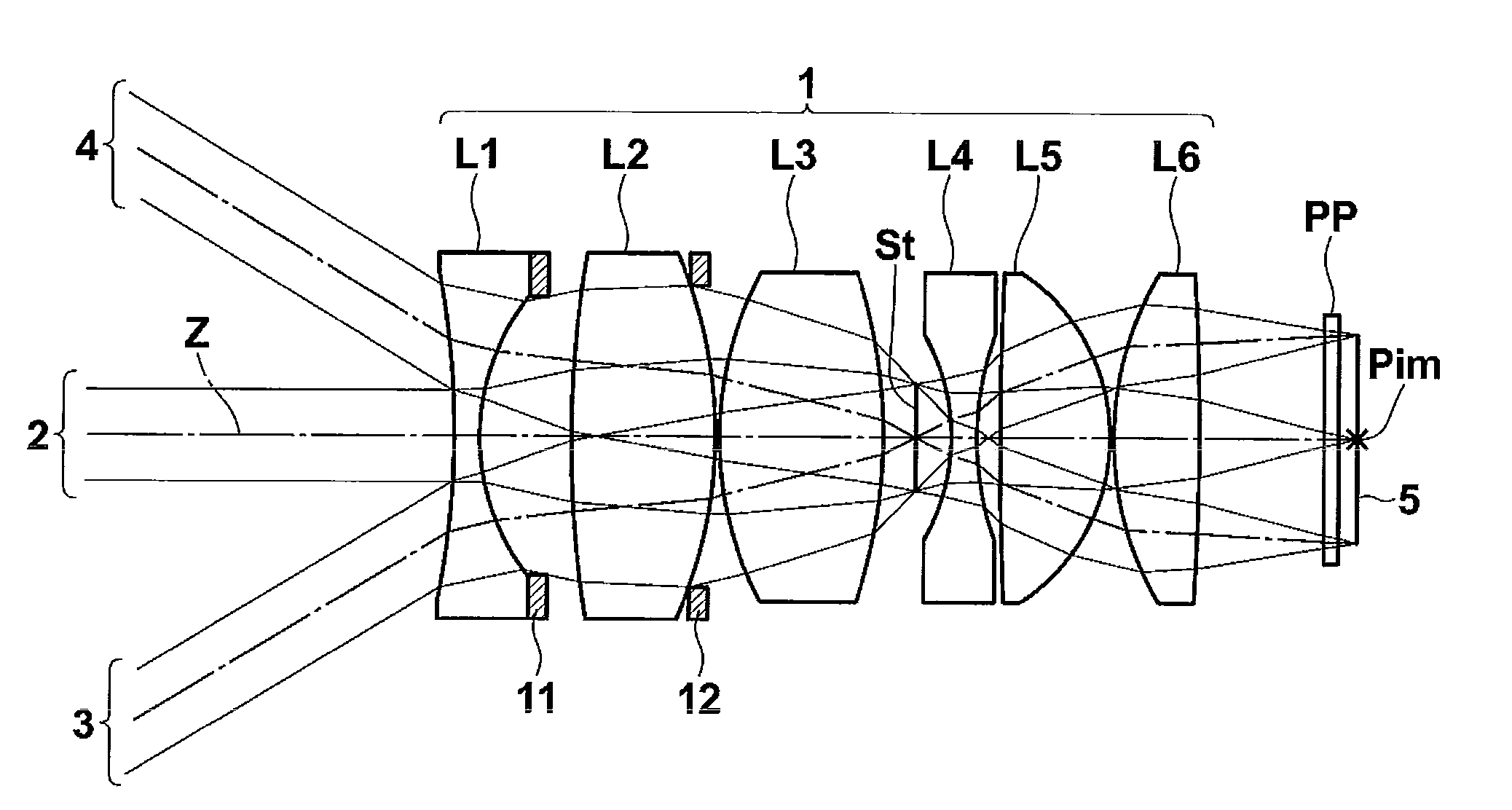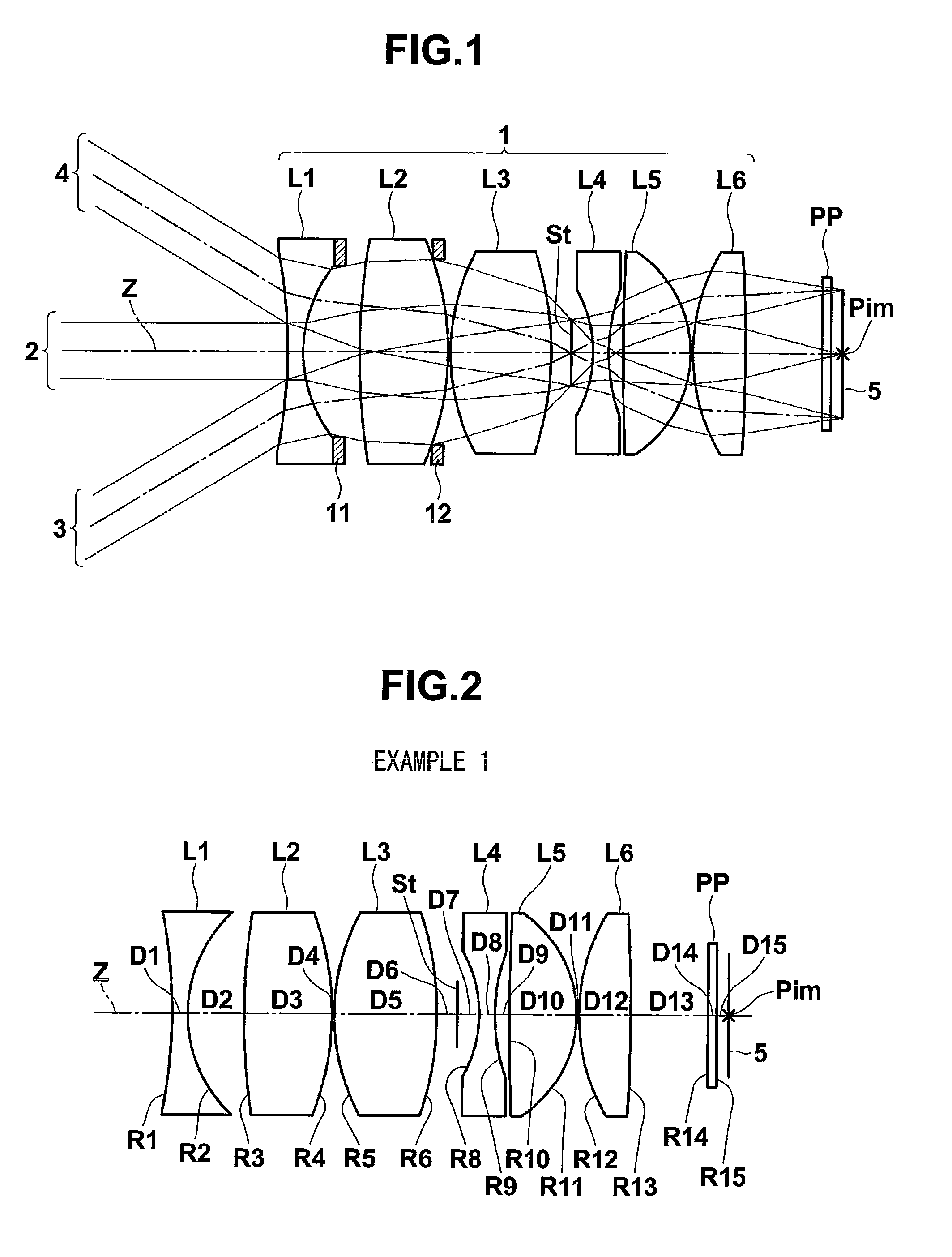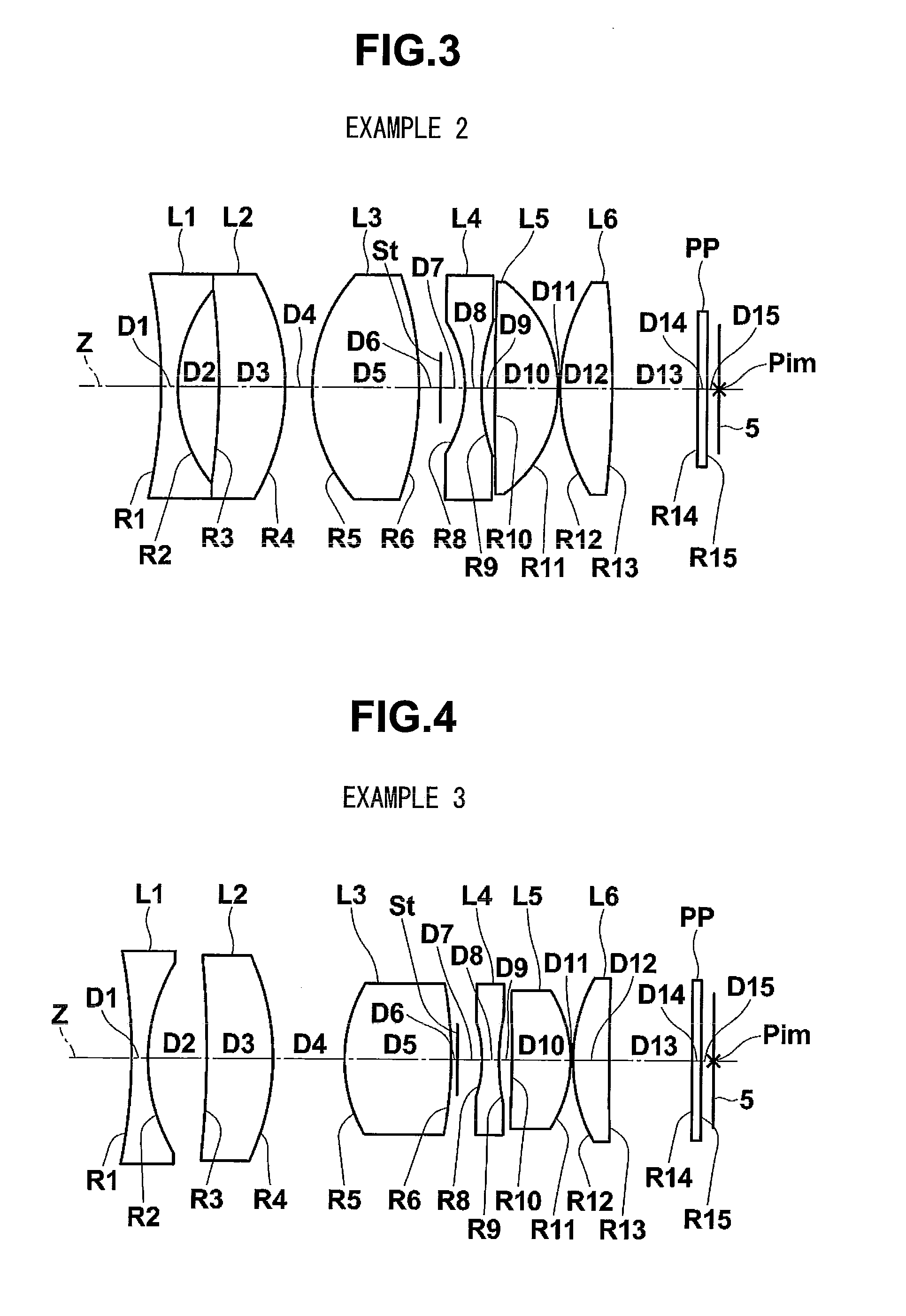Imaging lens and imaging apparatus
a technology of imaging apparatus and lens, applied in the field of imaging lens and imaging apparatus, can solve the problem of high manufacturing cost of imaging lens, and achieve the effects of low manufacturing cost, high optical performance and small siz
- Summary
- Abstract
- Description
- Claims
- Application Information
AI Technical Summary
Benefits of technology
Problems solved by technology
Method used
Image
Examples
first embodiment
[0058]The imaging lens 1 according to a first embodiment shown in FIG. 1 includes a first lens L1 that has a negative power and includes a concave surface facing an image side, a second lens L2 having a positive power, a third lens L3 having a positive power, an aperture diaphragm St, a fourth lens L4, which is a biconcave lens having a negative power, a fifth lens L5 that has a positive power and includes a convex surface facing the image side, and a sixth lens L6 that has a positive power and includes a convex surface facing an object side. The first to sixth lenses are arranged in this order from the object side. The imaging lens 1 includes a relatively small number of lenses, for example, a minimum of six lenses. Therefore, it is possible to reduce the total length of the imaging lens in the optical axis direction. FIG. 1 does not show the shape or size of the aperture diaphragm St, but shows the position of the aperture diaphragm St on the optical axis Z.
[0059]Since the first l...
second embodiment
[0097]An imaging lens 1 according to a second embodiment shown in FIG. 12 includes a first lens L1 that has a negative power and includes a concave surface facing an image side, a second lens L2, which is a biconvex lens having a positive power, a third lens L3 having a positive power, an aperture diaphragm St, a fourth lens L4, which is a biconcave lens having a negative power, a fifth lens L5 that has a positive power and includes a convex surface facing the image side, and a sixth lens L6 that has a positive power and includes a convex surface facing an object side. The first to sixth lenses are arranged in this order from the object side. The imaging lens 1 includes a relatively small number of lenses, for example, a minimum of six lenses. Therefore, it is possible to reduce the total length of the imaging lens in the optical axis direction. FIG. 12 does not show the shape or size of the aperture diaphragm St, but shows the position of the aperture diaphragm St on the optical ax...
example 1
[0158]The structure of an imaging lens according to Example 1 is shown in FIG. 2, and lens data and various data are shown in Table 1.
TABLE 1Example 1 Lens dataSiRiDiNdjνdj1−23.430.701.772549.626.152.50330.053.901.883040.84−12.550.1159.584.501.755052.36−14.190.897 (Aperture diaphragm)0.978−5.660.701.922918.998.220.6410 100.173.001.755052.311 −5.390.1012 8.862.301.772549.613 −73.143.4014 ∞0.401.516864.215 ∞0.50Image surface—Example 1 Various dataFno.2.002ω62.4L24.48Bf4.17f5.07f1−6.24f210.48f38.25f4−3.54f56.86f610.36f4567.60IH2.8ED18.29
[0159]In the lens data shown in Table 1, Si indicates an i-th (i=1, 2, 3, . . . ) surface number. In this case, the surface of a component closest to the object side is given number 1, and the surface number is sequentially increased toward the image side. In addition, the lens data shown in Table 1 includes the aperture diaphragm St and the optical member PP.
[0160]In Table 1, Ri indicates the curvature radius of the i-th (i=1, 2, 3, . . . ) surface, an...
PUM
 Login to View More
Login to View More Abstract
Description
Claims
Application Information
 Login to View More
Login to View More - R&D
- Intellectual Property
- Life Sciences
- Materials
- Tech Scout
- Unparalleled Data Quality
- Higher Quality Content
- 60% Fewer Hallucinations
Browse by: Latest US Patents, China's latest patents, Technical Efficacy Thesaurus, Application Domain, Technology Topic, Popular Technical Reports.
© 2025 PatSnap. All rights reserved.Legal|Privacy policy|Modern Slavery Act Transparency Statement|Sitemap|About US| Contact US: help@patsnap.com



